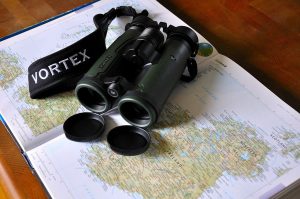I'm wanting to upgrade but was wondering at what price point is the best value. I'm happy to spend quite a bit more but realise as with most products there can be limited gains despite huge price differences.
What would real world differences be from say a £500 to £1000?
I think, because the personal circumstances (both financially and what we expect from binoculars) of each of us are different, this is really a journey that each individual must take for himself - and that attitudes towards quality vs value can and often do change over time and through experience. Some years ago now I had the opportunity to choose between a 10x40 Dialyt (P model) and a 10x42 FL which was almost twice the price. At the time, I just didn't feel that what I thought was only a slight (though apparent) difference in optical performance was worth the cost. Now, much later, the latest binocular I have, somewhat reluctantly, purchased is a 10x42 that approximates the performance of the FL I tried years before. I suppose I could, and perhaps should, simply have plonked down the extra cash back then. But the experience of using the Dialyt was also valuable, in that I got to enjoy its qualities, find out what it could and could not do for me in the field, and in general educate myself more about binoculars in general.
I feel the best quality (optical and mechanical) for the cheapest price is always found secondhand, and if your budget is between £500 and £1000 it's possible, with care and patience, to acquire some really good binoculars from the used market. The sentiment that one should never look through better binoculars than one can afford does indeed have much to recommend it, but I have to say, speaking for myself only, that trying the top alphas at places like Birdfair (I'm really grateful to have done so now, as goodness knows whether opportunities like that will ever return) has been a very educational experience. Having tried a wide range of alphas, ex-alphas and sub-alphas was very helpful in deciding what was best in optical performance (brightness, sharpness on axis and to the edge, field of view, colour rendition), and what I really needed for my own requirements.
A couple of things I've found, and again this is speaking only for myself: for some (many) kinds of birding it isn't necessary to have alpha performance to enjoy a wonderful day. But for other jobs, unfortunately, that level of optical performance I can only describe as alpha or near alpha class makes a real difference. Also, the practical value of, and indeed the pleasure in handling, something well built (mechanically) should never be underestimated. Just think how many times in a day you turn that focus wheel, or even adjust eyecups or similar things. That is partly the reason why the best of the great old classics (Leitzes and so on) are still admired today despite their optical performance being in many respects sub-par to even a £300 Opticron (as the gentleman I spoke to at the InFocus stand memorably once told me).







